-
 Bitcoin
Bitcoin $94,178.2696
-0.16% -
 Ethereum
Ethereum $1,797.8459
-0.09% -
 Tether USDt
Tether USDt $0.9999
-0.01% -
 XRP
XRP $2.1034
-2.70% -
 BNB
BNB $597.2445
1.54% -
 Solana
Solana $144.2857
-0.44% -
 USDC
USDC $0.9999
0.00% -
 Dogecoin
Dogecoin $0.1677
-1.93% -
 TRON
TRON $0.2479
-0.33% -
 Cardano
Cardano $0.6552
-3.32% -
 Sui
Sui $3.3008
-0.91% -
 Chainlink
Chainlink $13.4491
-3.79% -
 Avalanche
Avalanche $19.5090
-3.13% -
 UNUS SED LEO
UNUS SED LEO $8.6562
-4.70% -
 Stellar
Stellar $0.2558
-4.51% -
 Toncoin
Toncoin $2.9790
-1.37% -
 Shiba Inu
Shiba Inu $0.0...01250
-2.47% -
 Hedera
Hedera $0.1719
-2.76% -
 Bitcoin Cash
Bitcoin Cash $351.7733
-1.12% -
 Hyperliquid
Hyperliquid $20.0428
-1.08% -
 Litecoin
Litecoin $82.0553
-4.40% -
 Polkadot
Polkadot $3.8710
-2.98% -
 Dai
Dai $1.0000
0.00% -
 Monero
Monero $274.4029
-0.45% -
 Bitget Token
Bitget Token $4.2956
-0.11% -
 Ethena USDe
Ethena USDe $1.0004
0.00% -
 Pi
Pi $0.5861
-0.74% -
 Pepe
Pepe $0.0...07804
-4.97% -
 Bittensor
Bittensor $368.2951
5.54% -
 Uniswap
Uniswap $4.8977
-2.94%
eth account and wallet address
Understanding the complexities of Ethereum accounts and wallet addresses is crucial for managing your digital assets securely and effectively.
Jan 12, 2025 at 08:38 pm

Securing Your Digital Assets: A Comprehensive Guide to Ethereum Account and Wallet Addresses
Key Points:
- Understanding the intricacies of Ethereum accounts and wallet addresses
- Identifying the different types of Ethereum accounts and wallets
- Enhancing security measures for Ethereum accounts and wallets
- Exploring best practices for managing Ethereum assets
- Utilizing advanced features for optimal Ethereum account and wallet management
Ethereum Accounts and Wallet Addresses
An Ethereum account is a unique digital identity on the Ethereum blockchain that allows users to interact with the network. It is composed of a public address and a private key. The public address is used to receive and send transactions, while the private key is used to sign transactions and access funds.
An Ethereum wallet is a software program or hardware device that allows users to store, manage, and transact Ethereum assets. Wallets can be categorized into two main types: software wallets and hardware wallets. Software wallets are stored on a user's computer or mobile device, while hardware wallets are dedicated devices designed specifically for cryptocurrency storage.
Types of Ethereum Accounts
There are two primary types of Ethereum accounts:
- Externally Owned Accounts (EOAs): EOAs are controlled by private keys. They are typically used by individuals or entities that actively interact with the Ethereum blockchain.
- Contract Accounts: Contract accounts are smart contracts that have their own balance and code. They are used to create and execute decentralized applications (dApps).
Types of Ethereum Wallets
There are numerous Ethereum wallet providers in the market, each offering its own features and security measures. The following are some of the most commonly used types:
Software Wallets:
- Desktop Wallets: Stored on a user's computer, offering advanced features and customization options. Examples include MetaMask and MyEtherWallet.
- Mobile Wallets: Designed for convenience and accessibility on smartphones. Examples include Trust Wallet and Coinbase Wallet.
- Web Wallets: Accessible through web browsers, providing ease of use but potentially less security. Examples include MetaMask web wallet and Coinbase web wallet.
- Hardware Wallets: Physical devices that store private keys offline, providing enhanced security. Examples include Ledger and Trezor.
Securing Ethereum Accounts and Wallets
Protecting your Ethereum assets requires implementing robust security measures:
- Use strong and unique passwords for both your account and wallet.
- Enable two-factor authentication (2FA) or multi-factor authentication (MFA) to add an extra layer of security.
- Regularly back up your wallet's seed phrase or private key in a secure location.
- Be vigilant against phishing scams and suspicious emails or websites.
- Store larger amounts of funds in hardware wallets for increased protection.
- Keep your software up to date to patch any vulnerabilities.
Best Practices for Managing Ethereum Assets
To effectively manage your Ethereum assets, consider the following best practices:
- Understand the basics: Familiarize yourself with the underlying concepts of Ethereum accounts, wallets, and blockchain technology.
- Choose a reputable wallet: Select a wallet provider with a strong track record of security and reliability.
- Secure your private key: Keep your private key safe and never share it with anyone.
- Monitor transactions: Regularly review your account and wallet activity to detect any unauthorized transactions.
- Manage risk: Diversify your investments and consider using a hardware wallet or multi-signature setups for large amounts of funds.
Advanced Features for Ethereum Account and Wallet Management
For advanced users, several features can enhance their account and wallet management capabilities:
- Smart contract integration: Some wallets allow you to interact with smart contracts directly from your wallet interface.
- dApp support: Wallets that support dApps provide access to a wide range of decentralized applications.
- Custom token management: You can add and manage custom tokens and coins in supported wallets.
- Cross-chain capabilities: Some wallets offer cross-chain functionality, allowing you to transact and interact with multiple blockchain networks.
FAQs
Q: What is the difference between an Ethereum account and a wallet address?
A: An Ethereum account is a digital identity on the Ethereum blockchain, while a wallet address is the public address associated with that account.
Q: Which is more secure, a hardware wallet or a software wallet?
A: Hardware wallets generally offer higher security as they store private keys offline, making them less vulnerable to cyberattacks.
Q: Can I use multiple Ethereum accounts?
A: Yes, you can create multiple Ethereum accounts and manage them with the same or different wallets.
Q: What are the potential risks associated with Ethereum accounts and wallets?
A: Potential risks include phishing scams, malware attacks, and unauthorized access to private keys.
Q: How can I recover my Ethereum account if I lose my private key?
A: If you have backed up your wallet's seed phrase or private key, you can recover your account using that information. Otherwise, recovery might be challenging or impossible.
Disclaimer:info@kdj.com
The information provided is not trading advice. kdj.com does not assume any responsibility for any investments made based on the information provided in this article. Cryptocurrencies are highly volatile and it is highly recommended that you invest with caution after thorough research!
If you believe that the content used on this website infringes your copyright, please contact us immediately (info@kdj.com) and we will delete it promptly.
- Dogecoin (DOGE) Price Rebounds Sharply From April Lows, Gains 38% and Reignite Bullish Forecasts
- 2025-05-06 10:10:12
- Ruvi (RUVI) Has Captured the Market's Attention with Rumors of Major Acquisitions and the Unlocking of One Billion XRP from Escrow
- 2025-05-06 10:10:12
- House Financial Services Committee's Maxine Waters will block efforts to hold a joint hearing on market structure discussion draft bill
- 2025-05-06 10:05:11
- Pepeto Promises the Return of Altcoin Season as Bitcoin (BTC) Slows
- 2025-05-06 10:05:11
- India proposes zero-for-zero tariffs on pharmaceuticals, auto parts and steel to break Trump Tariff War deadlock
- 2025-05-06 10:01:53
- Trump’s meme coin business racks up fees as buyers jump at the chance for access to the president
- 2025-05-06 10:01:53
Related knowledge
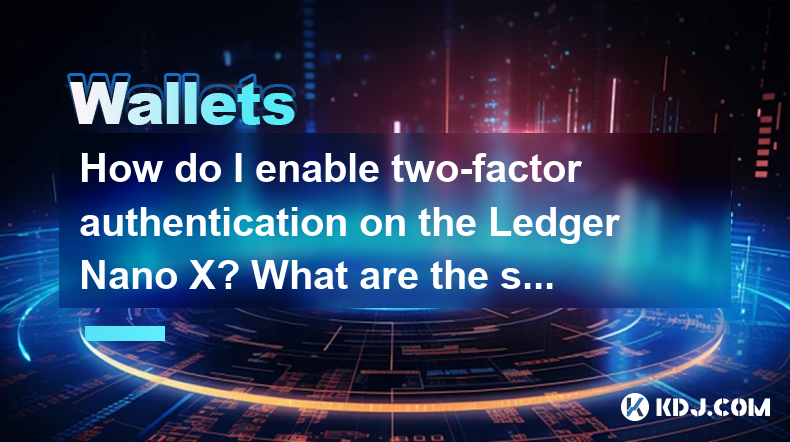
How do I enable two-factor authentication on the Ledger Nano X? What are the security options?
May 02,2025 at 09:49pm
Enabling two-factor authentication (2FA) on your Ledger Nano X is a critical step in securing your cryptocurrency assets. The Ledger Nano X offers robust security options that enhance the protection of your digital wealth. In this article, we will guide you through the process of enabling 2FA on your Ledger Nano X and explore the various security featur...
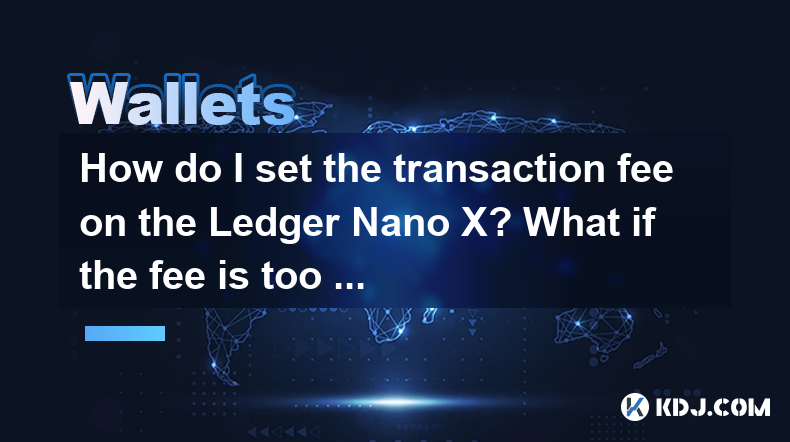
How do I set the transaction fee on the Ledger Nano X? What if the fee is too high?
May 05,2025 at 09:21pm
Setting the transaction fee on your Ledger Nano X is an essential part of managing your cryptocurrency transactions efficiently. The transaction fee directly impacts how quickly your transaction is processed and confirmed on the blockchain. In this guide, we will walk you through the steps to set the transaction fee on your Ledger Nano X, and what to do...
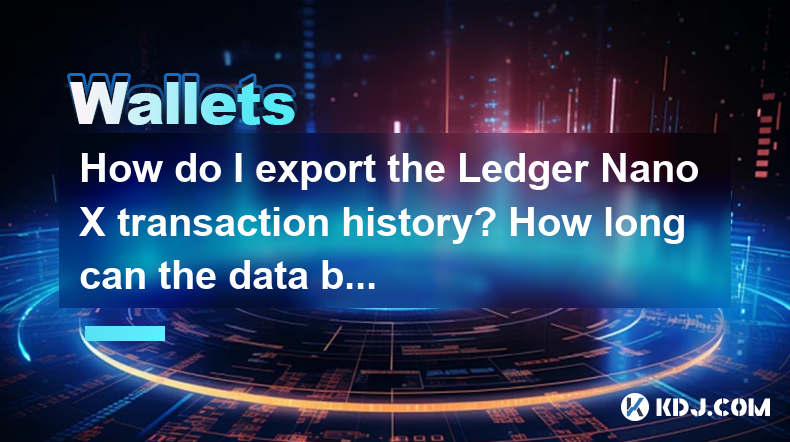
How do I export the Ledger Nano X transaction history? How long can the data be saved?
May 04,2025 at 07:21am
Introduction to Ledger Nano X and Transaction HistoryThe Ledger Nano X is a hardware wallet designed to store your cryptocurrency safely. It supports a wide range of cryptocurrencies and offers robust security features. One of the essential aspects of managing your cryptocurrencies is keeping track of your transaction history. The Ledger Nano X allows y...
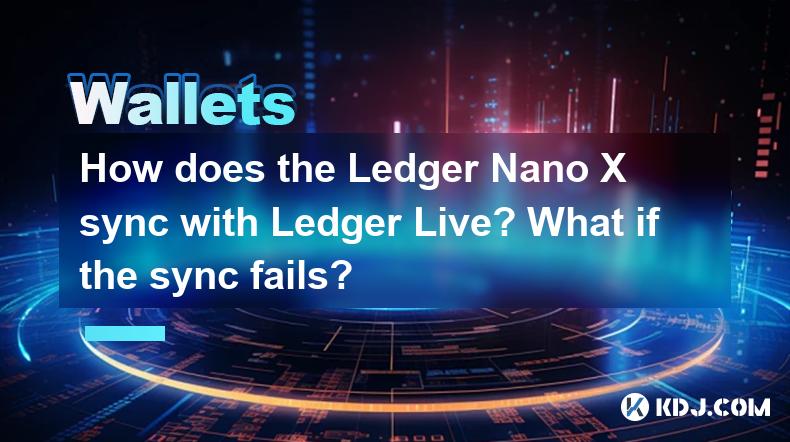
How does the Ledger Nano X sync with Ledger Live? What if the sync fails?
May 04,2025 at 12:07pm
The Ledger Nano X is a popular hardware wallet that allows users to securely manage their cryptocurrency assets. One of the key features of the Ledger Nano X is its ability to sync with the Ledger Live application, which provides a user-friendly interface for managing your crypto portfolio. In this article, we will explore how the Ledger Nano X syncs wi...
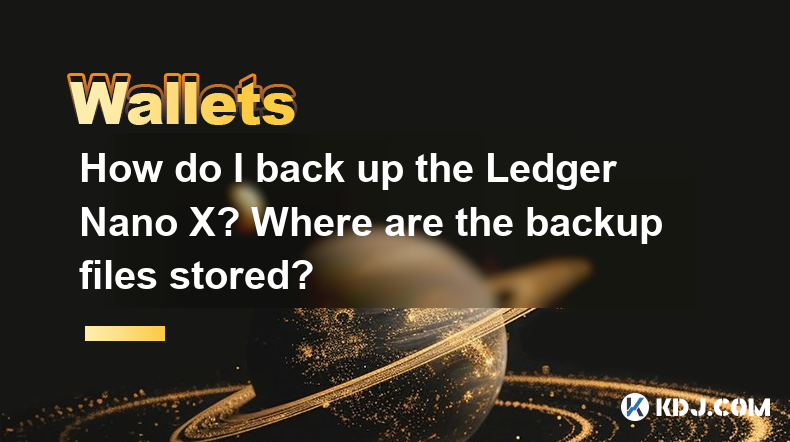
How do I back up the Ledger Nano X? Where are the backup files stored?
May 06,2025 at 09:07am
Introduction to Backing Up Your Ledger Nano XBacking up your Ledger Nano X is crucial for safeguarding your cryptocurrencies. A backup ensures that you can recover your funds if your device is lost, stolen, or damaged. In this article, we will delve into the step-by-step process of backing up your Ledger Nano X, as well as where the backup files are sto...
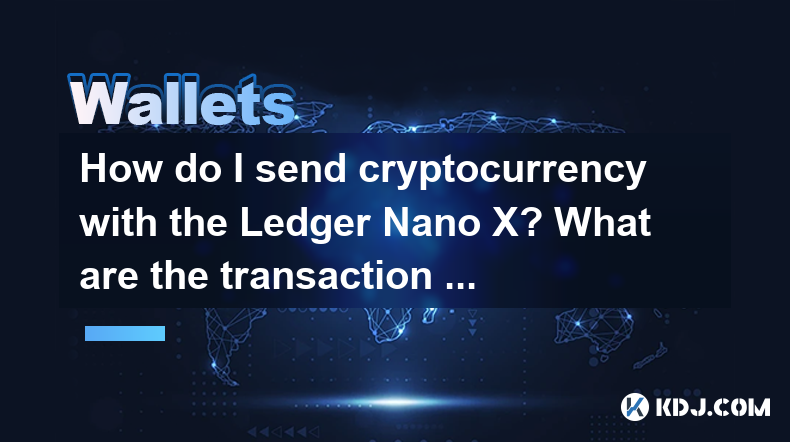
How do I send cryptocurrency with the Ledger Nano X? What are the transaction confirmation steps?
May 03,2025 at 05:01am
Sending cryptocurrency using the Ledger Nano X involves a series of steps that ensure the security and accuracy of your transactions. This process is designed to be user-friendly while maintaining the high level of security that Ledger devices are known for. In this article, we will guide you through the process of sending cryptocurrency with the Ledger...

How do I enable two-factor authentication on the Ledger Nano X? What are the security options?
May 02,2025 at 09:49pm
Enabling two-factor authentication (2FA) on your Ledger Nano X is a critical step in securing your cryptocurrency assets. The Ledger Nano X offers robust security options that enhance the protection of your digital wealth. In this article, we will guide you through the process of enabling 2FA on your Ledger Nano X and explore the various security featur...

How do I set the transaction fee on the Ledger Nano X? What if the fee is too high?
May 05,2025 at 09:21pm
Setting the transaction fee on your Ledger Nano X is an essential part of managing your cryptocurrency transactions efficiently. The transaction fee directly impacts how quickly your transaction is processed and confirmed on the blockchain. In this guide, we will walk you through the steps to set the transaction fee on your Ledger Nano X, and what to do...

How do I export the Ledger Nano X transaction history? How long can the data be saved?
May 04,2025 at 07:21am
Introduction to Ledger Nano X and Transaction HistoryThe Ledger Nano X is a hardware wallet designed to store your cryptocurrency safely. It supports a wide range of cryptocurrencies and offers robust security features. One of the essential aspects of managing your cryptocurrencies is keeping track of your transaction history. The Ledger Nano X allows y...

How does the Ledger Nano X sync with Ledger Live? What if the sync fails?
May 04,2025 at 12:07pm
The Ledger Nano X is a popular hardware wallet that allows users to securely manage their cryptocurrency assets. One of the key features of the Ledger Nano X is its ability to sync with the Ledger Live application, which provides a user-friendly interface for managing your crypto portfolio. In this article, we will explore how the Ledger Nano X syncs wi...

How do I back up the Ledger Nano X? Where are the backup files stored?
May 06,2025 at 09:07am
Introduction to Backing Up Your Ledger Nano XBacking up your Ledger Nano X is crucial for safeguarding your cryptocurrencies. A backup ensures that you can recover your funds if your device is lost, stolen, or damaged. In this article, we will delve into the step-by-step process of backing up your Ledger Nano X, as well as where the backup files are sto...

How do I send cryptocurrency with the Ledger Nano X? What are the transaction confirmation steps?
May 03,2025 at 05:01am
Sending cryptocurrency using the Ledger Nano X involves a series of steps that ensure the security and accuracy of your transactions. This process is designed to be user-friendly while maintaining the high level of security that Ledger devices are known for. In this article, we will guide you through the process of sending cryptocurrency with the Ledger...
See all articles




















































































